Where have all the vultures gone? Ph.D. student investigates
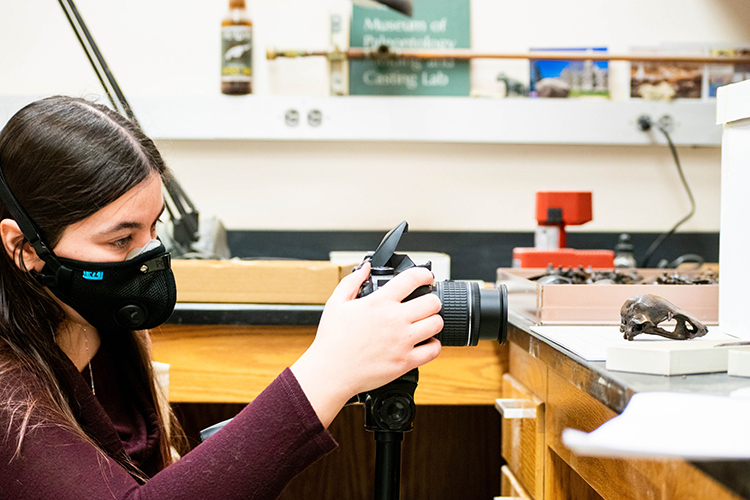
They feast on dead, rotting animals, urinate on their own feet to keep cool, and projectile vomit in self-defense. But UC Berkeley Ph.D. student Mackenzie Kirchner-Smith is passionate about vultures, and in California that means the turkey vulture and the largest land bird in North America — the California condor.
“Vultures are such an important part of our ecosystem. They’re huge decomposers that help rid the land of carcasses and take on things that other predators won’t touch,” Kirchner-Smith said. “They exist to eat what would otherwise be spreading disease.”
Today, 14 of the world’s 23 vulture species are threatened with extinction, particularly in Africa and Asia. In California, the California condor, categorized as “extinct in the wild” in 1987, remains critically endangered. And the state once had three more vulture species — during the Pleistocene time period, which ended 11,700 years ago and featured dramatic changes in climate and temperature.
“They disappeared, and maybe others we aren’t aware of,” she said. “In recent California history, for a time we were down to a single scavenger — the turkey vulture. And that’s a huge shift from having five different scavenging birds at one time.”
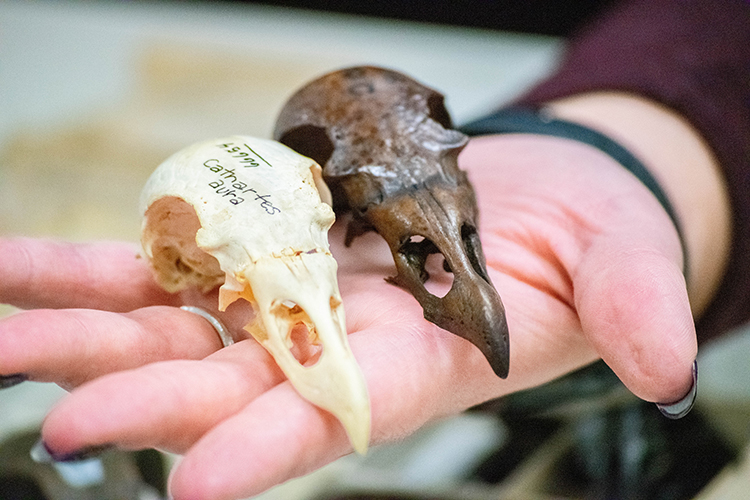
So, Kirchner-Smith, a member of Berkeley’s Bowie Lab, is zeroing in on the skulls of raptors —a group that includes vultures, eagles, hawks and falcons — to study these birds’ morphology and how changes over time in the shape of their bones give clues to their evolution and species diversification. Bird skulls, and beaks in particular, she said, can provide information about the life histories of birds, both now and in the past.
“Part of my research will be looking at not just the birds’ overall skull morphology,” she added, “but also the anatomy of their brains, based on endocasts obtained from CT scans” of the skulls.
She’s partnering with Logan King, a Ph.D. student at the University of Bristol in England, to look at the brains of these extinct birds, which “give us a rare opportunity to compare how soft tissues change with time,” said Kirchner-Smith. “Additionally, brain models allow us to infer sensory information and some behaviors based on how parts of the brain change shape and size between birds.”
Kirchner-Smith added that previous research points to skull morphology as a factor in how these birds feed and coexist.
“I want to look at it from a new perspective,” she said, “using CT scans and 3D geometric morphometrics. Geometric morphometrics analysis provides a mathematical way to describe biological shapes and is increasingly being used in the fields of biology and paleontology.”
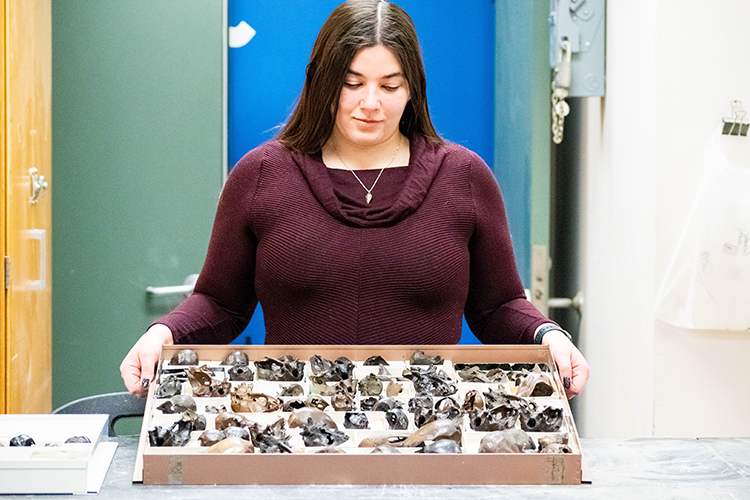
Ultimately, she said she hopes to discover how vultures differ from other raptors, how the various types of vultures differ from each other, “why it matters that they’re different, what’s driving these differences, and why we should care.”
Kirchner-Smith’s work is part of a new area of research — studying evolutionary change in shape using 3D data, said Patricia Holroyd, a senior museum scientist at the UC Museum of Paleontology, where Kirchner-Smith often can be found examining and scanning specimens.
But along with technology, her work also relies on prehistoric objects — fossilized birds brought to campus more than 100 years ago from the La Brea Tar Pits in Southern California and stored in the Campanile. So far, she’s done CT scans on more than 100 of the fossils, plus 250 more on modern raptor skulls from around the world that are in the holdings of the campus’s Museum of Vertebrate Zoology, the Smithsonian National Museum of Natural History and the Burke Museum of Natural History and Culture in Seattle.
“To find nearly complete fossil bird skulls is pretty incredible,” said Kirchner-Smith. “Because bird skulls are so delicate, it’s rare to find them in good condition in the fossil record.”
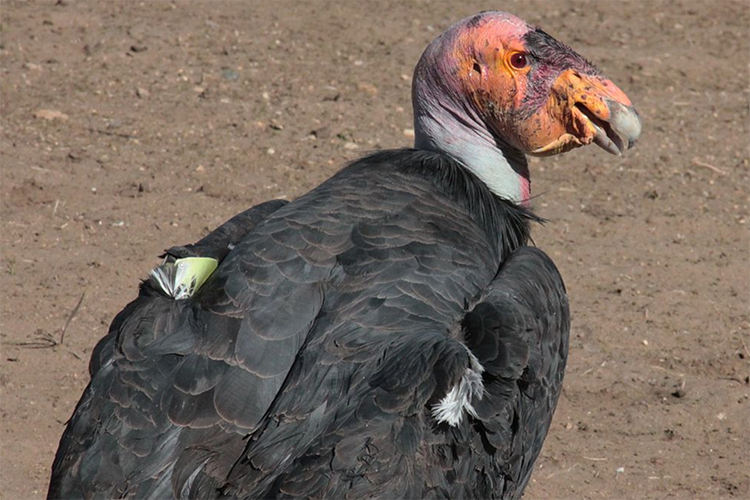
Holroyd said California is a great place for Kirchner-Smith, an Indiana native, to land for her doctorate, as it’s “a biodiversity hot spot for birds,” and echoed that Berkeley “is the perfect place to pursue this work, as we have amazing collections of bird skeletons in the Museum of Vertebrate Zoology and their fossil relatives in the UC Museum of Paleontology.”
Another perk at Berkeley, said Holroyd, is that the bird fossils’ living relatives — Annie and Grinnell, the peregrine falcons that have raised chicks on the Campanile for five breeding seasons — “are flying and nesting right here on the campus, where we can directly observe how they interact with their environment.”
Kirchner-Smith, in the sixth year of her Ph.D. program, but in the fourth year of this specific research, first became interested in fossil birds in 2009. As an undergraduate in geological sciences at Indiana University, she was working in the IU Paleontology Collections and became mesmerized by the end of a leg bone from a prehistoric Gastornis — a giant, 7-foot-tall, flightless bird from the Late Paleocene epoch that weighed half a ton.
“I thought it was one of the coolest things I’d ever seen,” she said. “It was like the size of my hand, this one bone.”
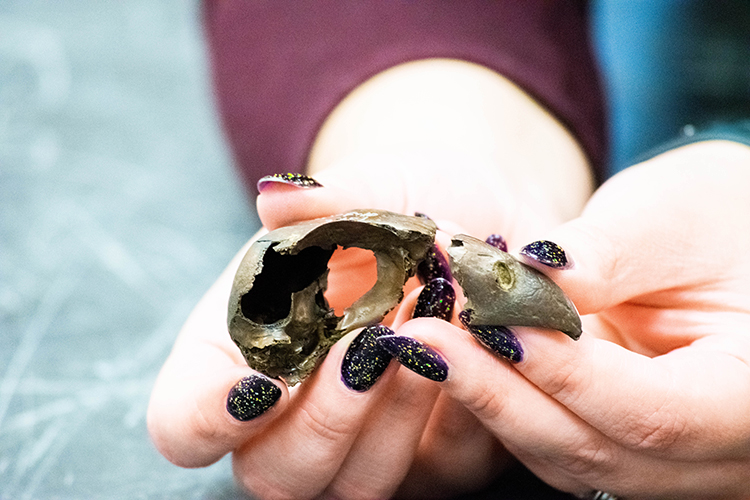
Later, as a graduate student in geological sciences at Fort Hays State University in Kansas, she used geometric morphometrics to examine the feet of Hesperornithiformes, an extinct group of aquatic birds that died out at the end of the Cretaceous time period and are closely related to the ancestors of modern birds.
“I liken them to giant, flightless loons with teeth,” she said. “I studied their feet instead of their skulls because their foot bones are dense and commonly preserved.”
Berkeley was her top choice for doctoral work, and one of reasons was that there were two museums right in the Valley Life Sciences Building, where she would spend six years on her way to a Ph.D. in integrative biology.
“It’s pretty uncommon, and a big plus, to find this at a university,” she said.
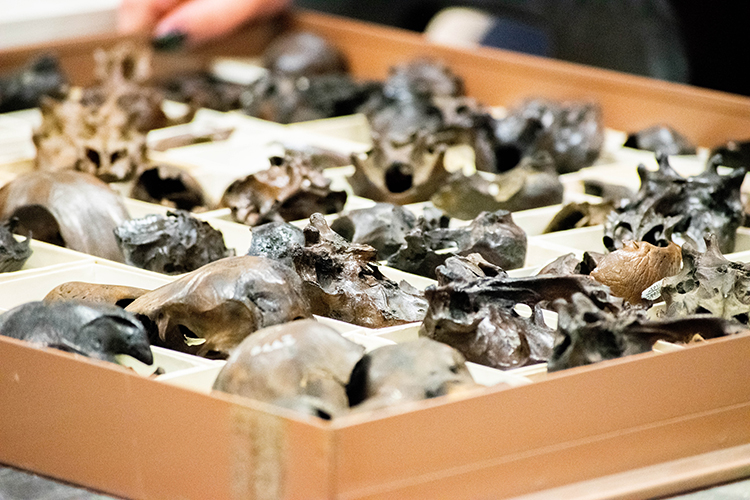
(UC Berkeley photo by Irene Yi)
Kirchner-Smith said she arrived “open-minded, ready to try anything new,” but returned to studying birds in the ornithology lab of Rauri C. K. Bowie, professor of integrative biology and ornithology curator at the Museum of Vertebrate Zoology. Bowie suggested she look into vultures, and with her interest piqued, she visited the La Brea Tar Pits and Museum in Los Angeles, where hard-to-find bird fossils are plentiful.
“Someone had mentioned the Campanile, but it was an offhand mention,” she said. “I figured, ‘I’ll have to go up there, at some point.’”
Kirchner-Smith said she had no idea that 20 tons of fossils from the tar pits had been brought to the tower long ago, and that many still are housed on several floors there.
“When I found out,” she said, “I thought it was cool and a little bit crazy. In February of 2020, I made a point of searching through the cabinets there myself.”
“I was thrilled, like a kid in a candy shop. I was looking specifically for vultures, for birds like condors and turkey vultures and their relatives found at La Brea. Additionally, I wanted to examine other raptor fossils that I found there. I kept finding more and more condor and eagle skulls, and I thought, ‘How come no one has done anything with this material?’”
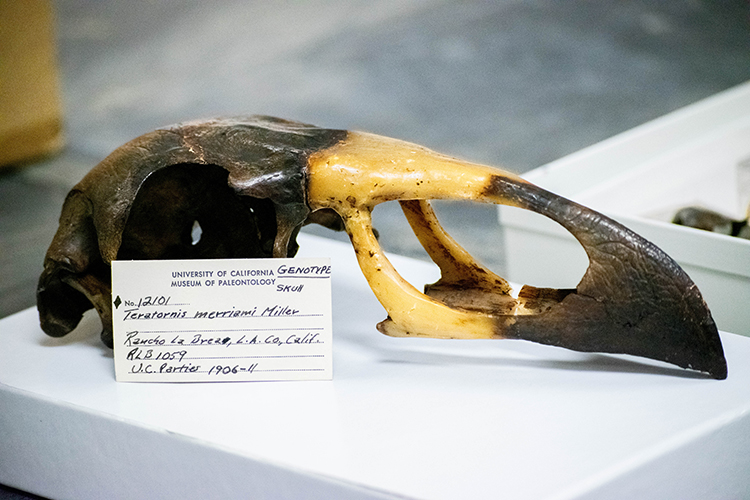
She found more fossils of vultures than of other raptors and moved about 100 specimens from the tower to a prep lab in the Valley Life Sciences Building. “I suspect there are more up there that could be useful to me,” she said, “but I haven’t had time to go back.”
Kirchner-Smith said another of her goals, while at Berkeley, is to identify to the species level of and to catalog and clean many of the tar pit fossils she’s working with, since “back in the early 1900s, when they were first pulled out of the tar and brought here, a lot of them haven’t been looked at since, never touched again.”
One of Kirchner-Smith’s suspicions, she said, is that the loss in North America of mega-fauna — the large mammals that existed before and during the Pleistocene — played a role in why vultures are more diverse in Africa, for example, as it’s “a rare place that still has abundant large animals.”
“Rather than being closely related, the ‘Old World’ vultures of Africa and Asia and the ‘New World’ vultures of North and South America evolved into scavengers convergently,” she said. “They share a lot features in common, such as a featherless head, elongated skull and reduced talons.”
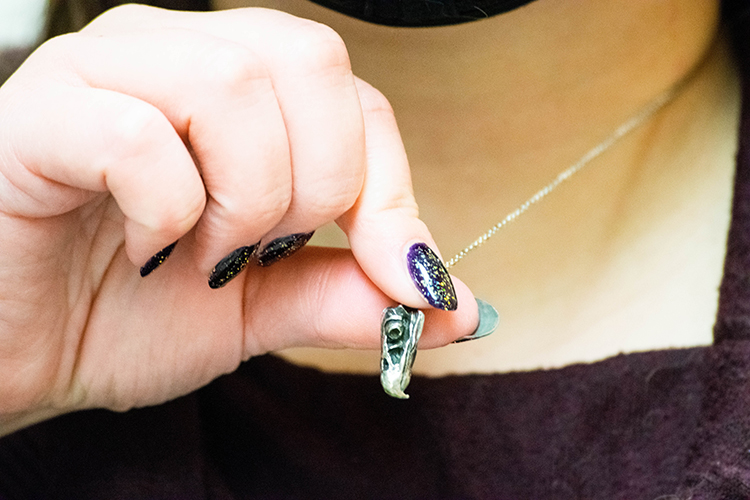
“The vultures we have in the Americas are so molecularly different from the other raptors that they’re in their own family. Some people argue that they should be in their own order,” she said. “But in Africa and Asia, vultures are in the same family as eagles and hawks. Our New World vultures have lost the diversity that Old World vultures have.
“That’s why I’m also looking at raptors from Africa and Asia, to help answer questions like, ‘Why did we only have the kind of diversity that exists among African and Asian vultures in the Pleistocene?’ ‘What’s different about here and Africa that’s driving why we have so few vultures now?’”
Her ultimate goal is to affect animal conservation.
“Most African and Indian and Asian vulture species are anywhere from critically endangered to threatened, and we are still trying to figure out what we can do to help these populations come back,” she said. “If we knew why they went extinct after the Pleistocene, maybe we’d have a better idea of how to conserve their landscapes now, of how to keep the small diversity of vultures today going strong.”
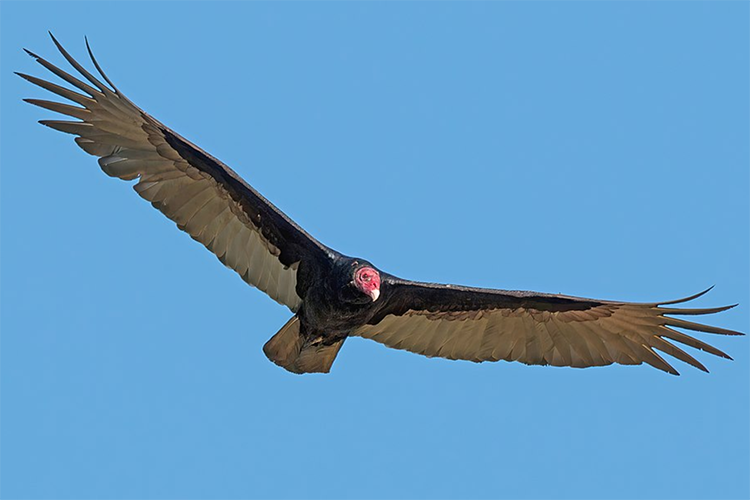
Research has shown that pesticides, such as DDT, and unregulated hunting — “primarily human-born issues” — have hurt raptors, said Kirchner-Smith, adding that the number of peregrine falcons took a devastating decline in the 1960s due to DDT use. The pesticide was banned in the early 1970s and breeding programs met with success.
With the California condor, which she described as a “slow-growing, slow-breeding bird that lays just one egg at a time and doesn’t even breed every year,” lead poisoning was a culprit, along with habitat destruction and poaching.
“They fed on carcasses of animals killed by lead shot from hunters, or were poisoned with lead in their habitats,” said Kirchner-Smith.
Through her research, “I hope to find a new way to look at these birds, so we can talk about what they’re doing in their environment, and why they’re doing it that way, and what can do to conserve spaces for them to live in.
“If nothing else, I want people to say, ‘We used to have so many other kinds of these birds, and now we don’t. Why is that?’ And to spark some interest in vultures that people didn’t have before. To not take for granted that they’re going to be here forever.”
